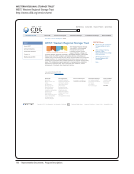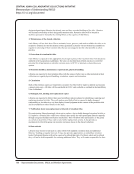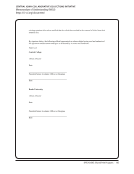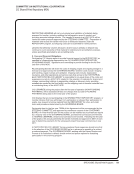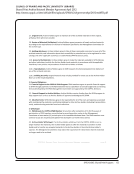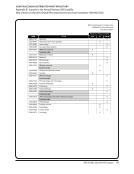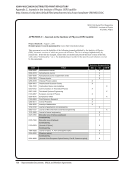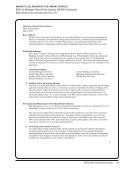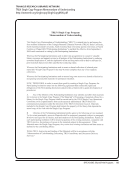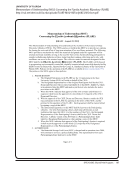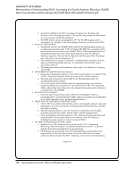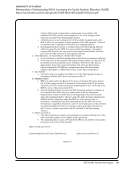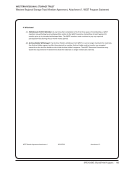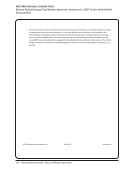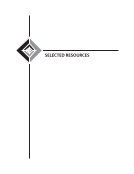SPEC Kit 345: Shared Print Programs · 19
frameworks for shared print collection management,
particularly for monographs.
The rationales for retaining print when journals
are well digitized and preserved can be generally
grouped into 1) technical cases related to digitization/
re-digitization (scanning errors, changing scanning
standards), 2) research cases that require consultation
with the print form, and 3) library stewardship or
collection management responsibilities (catastrophic
loss of online resources, my community thinks it is
important, institutional prestige, and avoiding deac-
cessioning work).
For print journals that are well digitized and dig-
itally preserved, the most compelling future uses
for print according to respondents were those that
require consultation with the print form, including
consultation for artifactual characteristics, authenti-
cating a version of record, access to illustrative content
or supplementary material, and access for digitally
disabled users.
Respondents expect those factors to be important
for the next twenty years, and in some cases beyond
twenty years (i.e., authenticating the version or record,
artifactual value, and to some extent access to illustra-
tive content). Uses related to stewardship, library col-
lection management issues, and community politics
may be important for the next five to ten years, but the
only enduring case in this area is to provide access
in the event of catastrophic loss of online resources.
Technical reasons related to digitization are expected
to be resolved in the next ten years.
In sum, ARL libraries anticipate that certain issues,
specifically those related to collection management
and digitization, would be resolved in the next decade
and are not rationales for print retention however,
they saw a very long-term need for access to print
for certain research purposes related to the artifact,
authenticity, access to illustrative and supplementary
content, and to support digitally disabled users.
Frameworks and Characteristics of Shared Print
Management
Shared print programs include many kinds of librar-
ies—not merely ARL and non-ARL academic libraries,
but also public libraries, school and special librar-
ies, community colleges, and non-degree granting
institutions. Existing programs also vary significantly
in size, with agreements to retain materials collec-
tively between as few as three libraries to as many as
204. Though most programs center around a specific
(though often sizeable) geographic region, the pro-
grams also cross national as well as state, provincial,
and territorial borders. State-supported and private
institutions are almost equally represented (121 state-
supported to 110 private). Some programs have a dis-
ciplinary focus, such as the PALMPrint initiative to
collect law material and the MedPrint Medical Serials
Preservation Program. The survey results indicate that
collaborative print collections are perceived to offer
benefits implicit to the practice of library collection
management, rather than to a type of institution or
philosophy of collection development.
Governance, Administration, and MOUs
Most shared print arrangements are defined by a for-
mal agreement, most often in the form of an MOU.
(Samples of these are included in the representative
documents section.) Although these agreements vary,
they typically spell out the structure for governance
and decision making for the project, indicate the terms
of service expected, and specify the duration of the
agreement. Many programs have multiple MOUs,
with different agreements for institutions that act as
host repositories and for those who supply books to be
held elsewhere, or hold lighter roles in the program.
The agreements covering participation and fund-
ing tend to be approved for short- to mid-duration
term periods, with 8 of 15 agreements (53%) signed for
10 or fewer years. Retention commitments are gener-
ally expected to outlast the terms of these agreements
13 of 17 (76%) committed to retain for more than 10
years, with 25 years being the most common com-
mitment duration.
Whether items are retained in the library of origin
or moved to a secondary location, the library con-
tributing shared content retains ownership over the
items in more than half of established agreements.
Less commonly, ownership may be transferred to the
holding library or to the shared print program itself.
The entity upholding the shared print agreement,
whether a consortium or individual library, is likely
to actively support the operations of the program in
frameworks for shared print collection management,
particularly for monographs.
The rationales for retaining print when journals
are well digitized and preserved can be generally
grouped into 1) technical cases related to digitization/
re-digitization (scanning errors, changing scanning
standards), 2) research cases that require consultation
with the print form, and 3) library stewardship or
collection management responsibilities (catastrophic
loss of online resources, my community thinks it is
important, institutional prestige, and avoiding deac-
cessioning work).
For print journals that are well digitized and dig-
itally preserved, the most compelling future uses
for print according to respondents were those that
require consultation with the print form, including
consultation for artifactual characteristics, authenti-
cating a version of record, access to illustrative content
or supplementary material, and access for digitally
disabled users.
Respondents expect those factors to be important
for the next twenty years, and in some cases beyond
twenty years (i.e., authenticating the version or record,
artifactual value, and to some extent access to illustra-
tive content). Uses related to stewardship, library col-
lection management issues, and community politics
may be important for the next five to ten years, but the
only enduring case in this area is to provide access
in the event of catastrophic loss of online resources.
Technical reasons related to digitization are expected
to be resolved in the next ten years.
In sum, ARL libraries anticipate that certain issues,
specifically those related to collection management
and digitization, would be resolved in the next decade
and are not rationales for print retention however,
they saw a very long-term need for access to print
for certain research purposes related to the artifact,
authenticity, access to illustrative and supplementary
content, and to support digitally disabled users.
Frameworks and Characteristics of Shared Print
Management
Shared print programs include many kinds of librar-
ies—not merely ARL and non-ARL academic libraries,
but also public libraries, school and special librar-
ies, community colleges, and non-degree granting
institutions. Existing programs also vary significantly
in size, with agreements to retain materials collec-
tively between as few as three libraries to as many as
204. Though most programs center around a specific
(though often sizeable) geographic region, the pro-
grams also cross national as well as state, provincial,
and territorial borders. State-supported and private
institutions are almost equally represented (121 state-
supported to 110 private). Some programs have a dis-
ciplinary focus, such as the PALMPrint initiative to
collect law material and the MedPrint Medical Serials
Preservation Program. The survey results indicate that
collaborative print collections are perceived to offer
benefits implicit to the practice of library collection
management, rather than to a type of institution or
philosophy of collection development.
Governance, Administration, and MOUs
Most shared print arrangements are defined by a for-
mal agreement, most often in the form of an MOU.
(Samples of these are included in the representative
documents section.) Although these agreements vary,
they typically spell out the structure for governance
and decision making for the project, indicate the terms
of service expected, and specify the duration of the
agreement. Many programs have multiple MOUs,
with different agreements for institutions that act as
host repositories and for those who supply books to be
held elsewhere, or hold lighter roles in the program.
The agreements covering participation and fund-
ing tend to be approved for short- to mid-duration
term periods, with 8 of 15 agreements (53%) signed for
10 or fewer years. Retention commitments are gener-
ally expected to outlast the terms of these agreements
13 of 17 (76%) committed to retain for more than 10
years, with 25 years being the most common com-
mitment duration.
Whether items are retained in the library of origin
or moved to a secondary location, the library con-
tributing shared content retains ownership over the
items in more than half of established agreements.
Less commonly, ownership may be transferred to the
holding library or to the shared print program itself.
The entity upholding the shared print agreement,
whether a consortium or individual library, is likely
to actively support the operations of the program in








































































































































